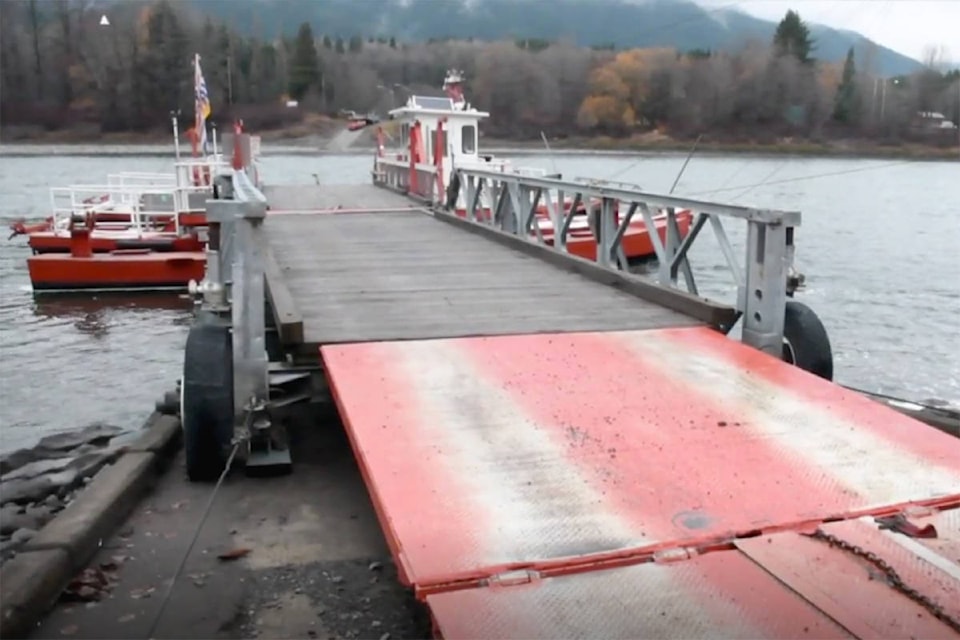After a few unusual months that kept it at bay due to low river levels, the Usk Ferry has prematurely entered its annual season shutdown.
Since mid-August, the ferry was only able to run for three days as result of the level four drought that the Skeena River Valley experienced this year.
“Right now, there isn’t enough water to get to the landing ramps so the ferry is just hitting rocks and we don’t want to run it to prevent damage,” says Dan Beaulac, general manager of Nechako Northcoast.
“Normally, we get enough wet weather in the fall so we’re able to run it until it freezes up, but because water levels have been so low since late summer, we haven’t had much opportunity to run the ferry.”
The town of North Usk has a population of about 15 residents and is located on the north side of the Skeena River, 19 km east of Terrace. In order to access their homes, they rely on the reaction ferry service but have been depending more heavily on the aerial cable car instead. Both services are on-demand and operated by Nechako Northcoast, funded by the B.C. Ministry of Transportation. There is no road access to the town.
READ MORE: Skeena river levels still below seasonal norm
Although the residents are self-sufficient and used to challenging conditions, the ferry tends to be used in preparation for the upcoming winter months to bring any items that may not fit on the cable car. They still have the ability to bring bags of pellets and chop their own firewood on the north side, but Beaulac says that the townspeople will take advantage of any ferry usage that they can get.
“There has been some impact to the residents… I would only assume they would have run into some challenges,” says Beaulac. “If they see the water levels coming up to where they’re in operating range, they’re pretty quick to let us know that they think the ferry is able to run.”
In previous winters, Beaulac says there have been desperate cases where they needed to haul large items across to North Usk but had to get creative with how to accomplish it.
“We’ve had occasions where people had their fridges fail in the middle of winter and the only way to get them across was to string-line them underneath the cable car to take them across.”
READ MORE: Province increases drought rating in parts of northern B.C
North Usk was established around the same time as Terrace and it’s part of the B.C. municipal law to provide appropriate service routes to residencies, whatever they may be. Many own vehicles on the road-side of the river to reach commercial centres to buy groceries and daily supplies. VIA Rail even makes requested stops to help service the town.
“They made a conscious choice to live there, so they’d be the type of person that sees the future and plans accordingly,” says Beaulac.
Daniel Baker, Skeena District’s operations manager at the B.C. Ministry of Transportation, says that the ministry will do everything they can to ensure that everything is as safe as possible in terms of transportation access.
“Every remote community has its challenges, so it’s also a challenge for us to provide service at times, but we do the best that we can. People always need to be prepared… (and like them) we should all have emergency supplies in our homes, from food and water to stuff like that and be ready for anything.”
The ferry was dismantled on Nov. 30 and is expected to be back in service when water levels rise again in the spring.
natalia@terracestandard.com
Like us on Facebook and follow us on Twitter
